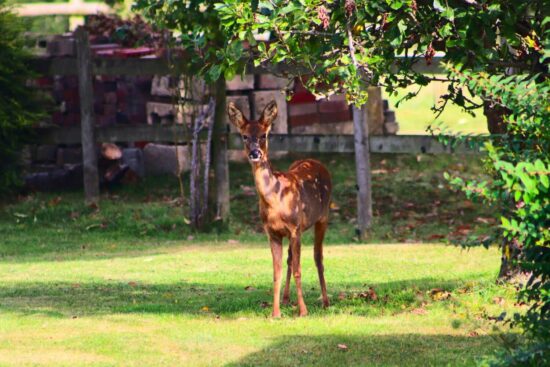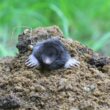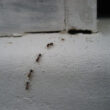If you’ve ever walked outside to find your beautiful hydrangeas looking like they went through a blender, you’re probably dealing with deer. These graceful animals might look innocent, but they can turn a stunning hydrangea garden into a mess of chewed stems and missing flowers overnight. The frustrating part is that hydrangeas seem to be deer candy, since they love everything about these plants.
But before you give up on growing these gorgeous shrubs, know that plenty of gardeners successfully grow hydrangeas even in areas packed with deer. The secret is understanding what makes deer tick and using the right protection methods to keep your plants safe and blooming.
The Short Answer
Yes, deer absolutely love to eat hydrangeas. These beautiful flowering bushes are actually some of the least deer-resistant plants you can put in your garden. But don’t worry! You can still grow gorgeous hydrangeas even if deer visit your yard. There are many proven ways to protect your plants and keep them blooming all season long.
No products found.
Why Deer Love Hydrangeas
Understanding what attracts deer to hydrangeas helps you better protect your plants and plan your garden strategy.
What Makes Hydrangeas So Appealing to Deer
Deer see hydrangeas as a tasty buffet for several reasons. These plants have tender, juicy leaves that are packed with moisture. The stems are soft and easy to chew, making them perfect snacks for hungry deer. Most importantly, deer really love the flowers. They often eat the tiny flower buds before you can even see them forming on the plant.
The high water content in hydrangea leaves makes them especially attractive during dry periods. Deer also get important nutrients from these plants, which helps them stay healthy. Unlike tough, woody plants that are hard to digest, hydrangeas are like fast food for deer.
When Deer Are Most Likely to Attack
Deer damage happens most often during certain times of the year. Late winter and early spring are the worst times because food is hard to find. Deer are hungriest during these months and will eat almost anything they can find.
Spring is particularly rough on hydrangeas because that’s when the large, juicy buds start to appear. These buds are like candy to deer. They taste sweet and are full of the nutrients deer need after a long winter.
Young, tender growth in spring and summer also attracts deer. New leaves and shoots are easier to digest than older, tougher plant parts. This means your hydrangeas are at risk from early spring all the way through summer.
What Deer Damage Looks Like
You can easily spot deer damage on your hydrangeas. Since deer don’t have upper front teeth, they can’t bite cleanly. Instead, they grab plants with their lower teeth and rip them apart. This leaves behind shredded, torn leaves that look like they went through a paper shredder.
You’ll also see jagged, broken stems where deer have yanked off branches. The damage often looks messy and random, unlike the clean cuts you’d see from garden tools or other animals.
The most heartbreaking damage is when deer eat all the flower buds. You might have a perfectly healthy looking plant that never blooms because deer ate all the flowers before they could open. In bad cases, deer can destroy an entire season of growth and flowers in just one night.
How to Stop Deer from Eating Hydrangeas
Learning how to stop deer from eating hydrangeas takes the right combination of methods. The good news is that many gardeners have found success using these proven techniques.
1. Physical Barriers Work Best
The most reliable way to protect your hydrangeas is to put up barriers that deer can’t get through. Fencing is the gold standard for deer protection. You need a fence that’s at least 8 feet tall because deer are amazing jumpers. They can easily clear shorter fences when they’re determined to reach your plants.
Electric fencing works extremely well if you’re willing to install it. Many gardeners find this gives them the best protection with less visual impact than tall traditional fences. You can also try creative solutions like an 8-foot wide border of gravel around your garden area. Deer don’t like walking on uneven stones, so this can work like an invisible fence.
For individual plants, deer netting is nearly invisible and very effective. This black mesh material is so fine that you barely notice it, but it completely stops deer from reaching your plants. You’ll need to adjust the netting each fall to account for plant growth.
Chicken wire cloches work great for protecting young or newly planted hydrangeas. These wire cages let the plants grow while keeping deer away. During winter, wrapping dormant hydrangeas in burlap gives extra protection when deer are most desperate for food.
2. Repellent Sprays Really Work
When used regularly, deer repellent sprays can be very effective. Commercial products like Bobbex have been tested and found to be 93% effective according to forestry departments. These sprays are made from ingredients that smell and taste terrible to deer, like rotten eggs, dried blood, and garlic.
The key to success with sprays is applying them consistently. Start spraying in early spring when new growth appears, then reapply every 10 to 14 days. You’ll also need to spray again after it rains because water washes the repellent away.
You can also make homemade deer repellents in your kitchen. Mix one egg yolk with a tablespoon of baking soda and three cups of water in a spray bottle. Spray this on your hydrangeas once a week. The egg smell keeps deer away for days, even though humans can’t smell it.
Another simple option is to cut up bars of strongly scented soap and scatter the pieces around your plants. Irish Spring soap is a popular choice that many gardeners swear by.
3. Smart Plant Combinations
You can make your hydrangeas less attractive to deer by surrounding them with plants that deer hate. This companion planting strategy creates a natural barrier that discourages deer from coming close.
Fragrant plants work especially well as deer deterrents. Plant salvia, lavender, peonies, or mint family plants around your hydrangeas. The strong scents from these plants mask the appealing smell of your hydrangeas and make deer want to look elsewhere for food.
Deer also avoid certain flowers and plants with rough textures. Ageratum, cleome, dusty miller, and marigolds all help keep deer away. Thorny plants like holly, barberry, and flowering quince create physical barriers that deer don’t want to push through.
4. Location and Behavior Tricks
Where you plant your hydrangeas makes a big difference in how likely deer are to eat them. Deer are naturally shy animals that prefer to stay away from areas with lots of human activity. Plant your hydrangeas close to your house, near patios, or along walkways where people spend time.
Motion-activated sprinklers and lights can startle deer and send them running. These devices work best when you use several different types so deer don’t get used to any one deterrent. The surprise factor is what makes them effective.
You can also make it uncomfortable for deer to walk in your garden. Lay chicken wire flat on the ground around your plants and cover it lightly with mulch. Deer hate the feeling of the wire under their feet and will avoid the area.
Having dogs can help keep deer away, though this isn’t foolproof. Some deer get used to dogs and will still visit gardens even when pets are around.
Which Hydrangea Types Handle Deer Best
Not all hydrangeas are equally appealing to deer. If you’re planning new plantings, choosing the right varieties can make a big difference in how much damage you see.
No products found.
Most Deer-Resistant Options
Bracted hydrangea (Hydrangea involucrata) is your best bet for deer resistance. This variety has fuzzy, velvety leaves that deer find unpleasant to eat. The texture bothers them enough that they usually look for easier meals elsewhere.
Climbing hydrangeas (Hydrangea anomala petiolaris) also do well around deer, but for a different reason. Once these plants get established and start climbing up trees or structures, most of their flowers and leaves are too high for deer to reach. Deer can only eat what they can get to, so height becomes your protection.
Mountain hydrangeas (Hydrangea serrata) have rough, thick leaves that deer find less appealing than the tender foliage of other types. While not completely deer-proof, they tend to suffer less damage than other varieties.
Moderately Resistant Types
Bigleaf hydrangeas (Hydrangea macrophylla) fall somewhere in the middle for deer resistance. Their leaves are fairly thick and somewhat leathery, which makes them less attractive to deer than the really vulnerable types. Many gardeners find these do reasonably well in deer areas, especially the varieties with the thickest leaves.
Most Vulnerable Types
Smooth hydrangeas, especially the popular ‘Annabelle’ variety (Hydrangea arborescens), are deer magnets. These are often called the “first choice of deer everywhere” because deer will eat every part of the plant, not just the flowers. The stems and leaves are just as appealing as the blooms to hungry deer.
Panicle hydrangeas (Hydrangea paniculata), including popular varieties like ‘Limelight’, are also very vulnerable. Deer don’t just nibble on these plants; they can eat them down to stubby nubs. If you plant a new panicle hydrangea, you’ll definitely need protection for the first few years until it gets big enough that the stems become too woody for deer to enjoy.
Oakleaf hydrangeas (Hydrangea quercifolia) are often the first to get eaten each spring because they bloom earlier than other types. Their large, sweet-smelling flowers are irresistible to deer who haven’t had many fresh options all winter.
What Happens After Deer Damage
Understanding how hydrangeas recover from deer damage can help you make better decisions about protection and plant selection.
Blooming Habits Matter
The type of hydrangea you have determines how well it bounces back from deer damage. Some hydrangeas bloom on old wood, which means they form their flower buds on branches that grew the previous year. If deer eat these buds in late winter or early spring, you won’t get any flowers that whole season.
Other hydrangeas bloom on new wood, meaning they form flower buds on branches that grow during the current year. These varieties have a much better chance of recovering from early season deer damage because they can still make new buds later in the season.
The newest hydrangea varieties are called reblooming types because they can flower on both old and new wood. These give you the best chance of getting some blooms even if deer cause damage early in the season.
Age and Size Make a Difference
Young hydrangeas are much more vulnerable to serious deer damage than older, established plants. Newly planted hydrangeas are especially at risk and should always be protected for their first few years in the garden.
Larger, mature hydrangeas can better handle some deer browsing. Even if deer eat the lower branches and buds, established plants often have enough size that some flowers survive out of deer reach.
The good news is that hydrangeas are tough plants that usually bounce back well from damage. With proper care, water, and patience, most hydrangeas will recover and bloom again the following year.
When to Consider Alternative Plants
Sometimes deer pressure is so heavy that growing hydrangeas becomes more frustrating than enjoyable. If you’ve tried multiple protection methods and still can’t keep your plants safe, you might want to consider deer-resistant alternatives that give you a similar look.
Viburnum shrubs have a similar growth habit to hydrangeas and produce clusters of white flowers that deer typically avoid. The scent and taste of viburnum leaves keep deer away from the plants themselves, though hungry deer might occasionally eat the flowers.
Butterfly bush provides long-lasting color similar to hydrangeas but with much better deer resistance. These plants have a fine texture that deer don’t find appealing.
Potentilla shrubs bloom all season long and have finely textured foliage that deer usually ignore. While the flowers are smaller than hydrangeas, they provide consistent color from spring through fall.
For evergreen structure similar to hydrangeas, boxwood is extremely deer resistant due to its strong scent and tough leaves.
Success Tips for Growing Hydrangeas with Deer
The most successful gardeners use multiple strategies at once. Don’t rely on just one method. Combine physical barriers with repellent sprays and smart plant placement for the best results.
Start protection early in the season and stay consistent. It’s much easier to prevent deer damage than to deal with it after it happens. Begin spraying repellents as soon as you see new growth in spring, and keep up with regular applications.
When learning how to stop deer from eating hydrangeas, remember that timing is everything. Pay special attention during bud development and throughout the blooming period when plants are most vulnerable.
Be patient with deer deterrent methods. It sometimes takes a few weeks for deer to learn that your garden is no longer an easy meal. Stick with your protection plan even if you see some initial damage.
Don’t give up on growing hydrangeas just because you have deer. These beautiful plants are worth the extra effort it takes to protect them. With the right combination of methods, you can successfully grow stunning hydrangeas that will bloom reliably year after year, even in areas with heavy deer populations.
The key to success is understanding that how to stop deer from eating hydrangeas requires consistent effort and the right approach for your specific situation. Whether you choose fencing, sprays, companion planting, or a combination of methods, protecting your hydrangeas is absolutely achievable with some planning and persistence.


